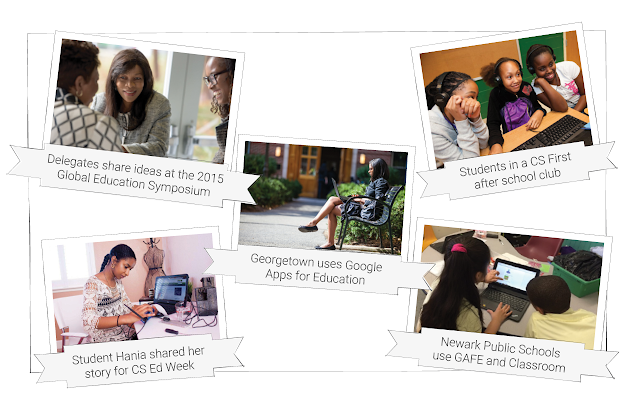(Cross-posted from the Google for Education blog.)
Editor's note: The 2016 Google Science Fair opens for submissions today. Together with LEGO Education, National Geographic, Scientific American and Virgin Galactic, we’re inviting all young explorers and innovators to make something better through science and engineering. To learn more about the competition, how to enter, prize details and more, visit the site, and follow along on Google+ and Twitter.
In this post, 2015 Grand Prize winner, Olivia Hallisey, joins us to reflect back on her own experience with Google Science Fair.
I remember the day I first heard about the Google Science Fair last year. I was sitting in my 10th grade science class when my teacher asked us: “What will you try?” I loved the invitation—and the challenge—that the Google Science Fair offered. It was a chance to use science to do something that could really make a difference in the world.
I had always been curious and interested in science, and knew I wanted to submit a project, but didn’t really know exactly where to begin. I asked my teacher for his advice on selecting a research topic. He encouraged me to choose something that I felt passionate about, or something that outraged me, and told me to look at the world around me for inspiration. So I did. At that time, the Ebola crisis was all over the news. It was a devastating situation and I wanted to help be a part of the solution. I had found my project.
With the outbreak spreading so quickly, I decided that I wanted to find a way to diagnose the virus earlier so that treatment could be delivered as quickly as possible to those who were affected. I read online about silk’s amazing storage and stabilizing properties, and wondered if I could use silk to transport antibodies that could test for the virus. After many failed attempts (and cutting up lots of cocoons) I finally succeeded in creating a temperature-independent, portable, and inexpensive diagnostic test that could detect the Ebola virus in under 30 minutes. I was really excited that my research could help contribute to saving lives, and I was proud to be selected as the Grand Prize winner a few months later.
As the 2016 Google Science Fair launches today, I wanted to share a few tips from my own experience: First, as my teacher once guided me to do, look at the world around you for ideas. If you’re stuck, try the Make Better Generator to find something that excites or inspires you. Second, find a mentor who’s interested in the same things as you. There are a lot of helpful ideas on the GSF site to get you started. And finally, don’t get discouraged—often what first appears like failure can teach you so much more.
I urge other teenagers like me to take this opportunity to find a way to make the world around them better. Every one of us, no matter our age or background, can make a difference—and as young people, we’re not always so afraid to try things that adults think will fail. But change doesn’t happen overnight, and it often starts with a question. So look at the world around you and challenge yourself to make something better.
Science isn’t just a subject—it’s a way to make things better. So I hope you’ll join the conversation and enter the Google Science Fair this year. Our world is waiting to see what you come up with!

















